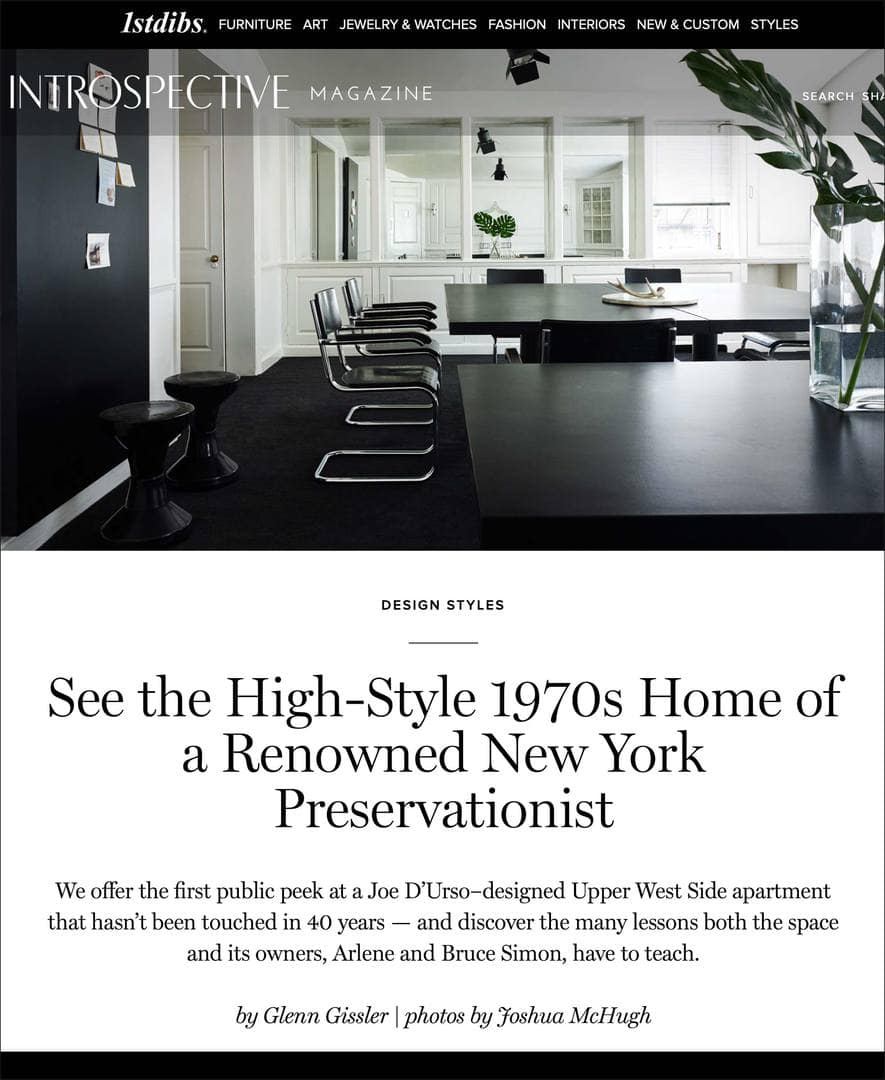Introspective Magazine
INTROSPECTIVE MAGAZINE
DESIGN STYLES
See the High-Style 1970s Home of a Renowned New York Preservationist
by Glenn Gissler
Photography by Joshua McHugh
We offer the first public peek at a Joe D’Urso–designed Upper West Side apartment that hasn’t been touched in 40 years — and discover the many lessons both the space and its owners, Arlene and Bruce Simon, have to teach.
Joe D’Urso — a pioneer of forward-looking, minimalist modernism — designed the apartment of Bruce and Arlene Simon on New York’s Upper West Side more than 40 years ago. Thanks to the Simons’ careful upkeep — she’s a well-known preservation advocate — it remains a study in sleek black, white and gray. Top: For the dining room, D’Urso created a modular table system (one leaf hangs from the wall when not in use, looking like an Ad Reinhardt painting deployed as bulletin board), and he added chairs in the style of Marcel Breuer’s 1920s Cesca design.
Even in the analog days of the 1970s, word traveled fast about a certain emerging and remarkably talented interiors star. His name was Joe D’Urso, and he was shaking up the design world.
I still remember the first time I saw his work, just after I graduated from high school and 10 years before I would start a design practice of my own. It was in Architectural Digest’s November/December 1976 issue, which featured a New York City home D’Urso had reinvented as an exemplar of High Tech design, the extreme minimalist–modernindustrial style that had become his signature. The Upper West Side apartment was unlike anything I had ever seen or imagined.
The space, located at the top of a West 67th Street Gothic-revival
His design for the home’s soaring main space, a double-height living room overlooked by a balcony originally intended to accommodate musical performances, felt radically new.
He furnished the space sparsely, with a few blocky, rolling black-Formica coffee tables and a couple of low-slung woven chairs set on a high carpeted platform. That plinth was one of several he created to break up and define various sections of the room, using one as a sofa, another as a daybed, and one even as a table. To help balance out the cavernous volume, D’Urso suspended a large split-leaf philodendron on wires from the ceiling, and Arlene added black canvas pillows to the extended built-in sofa, with more on the daybed near the fireplace.
Read the full Article on 1stdibs.com


